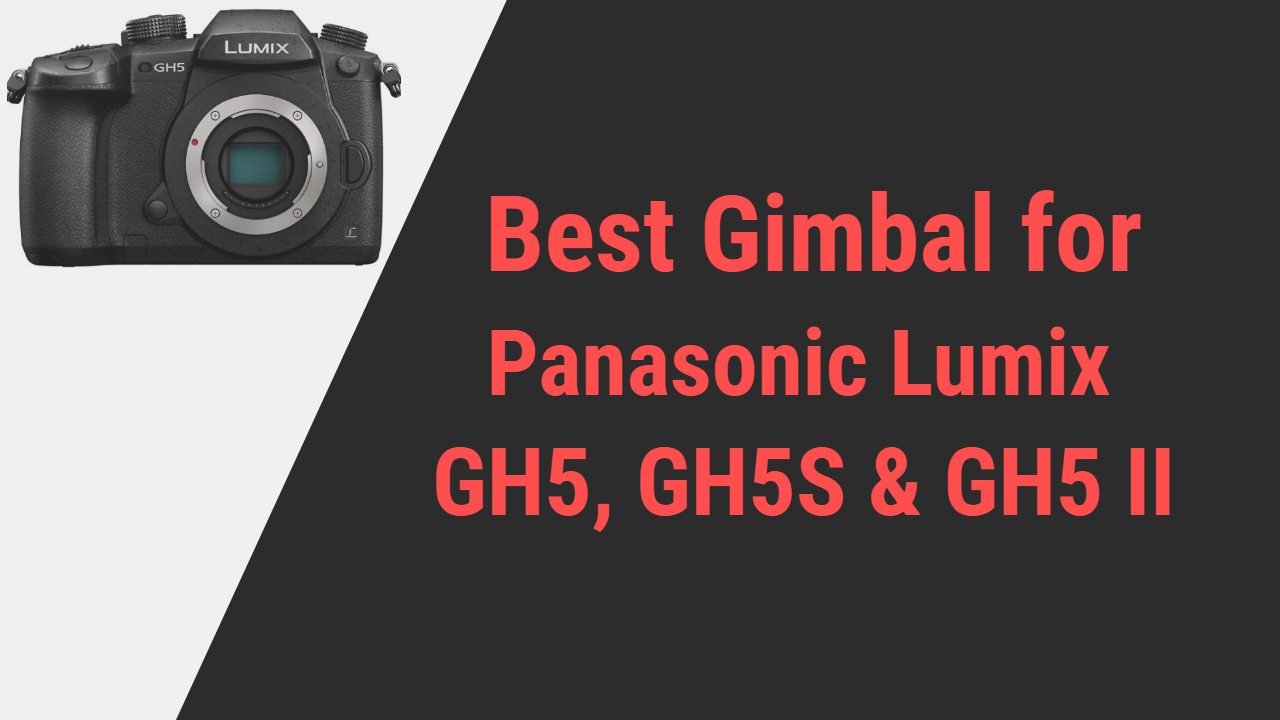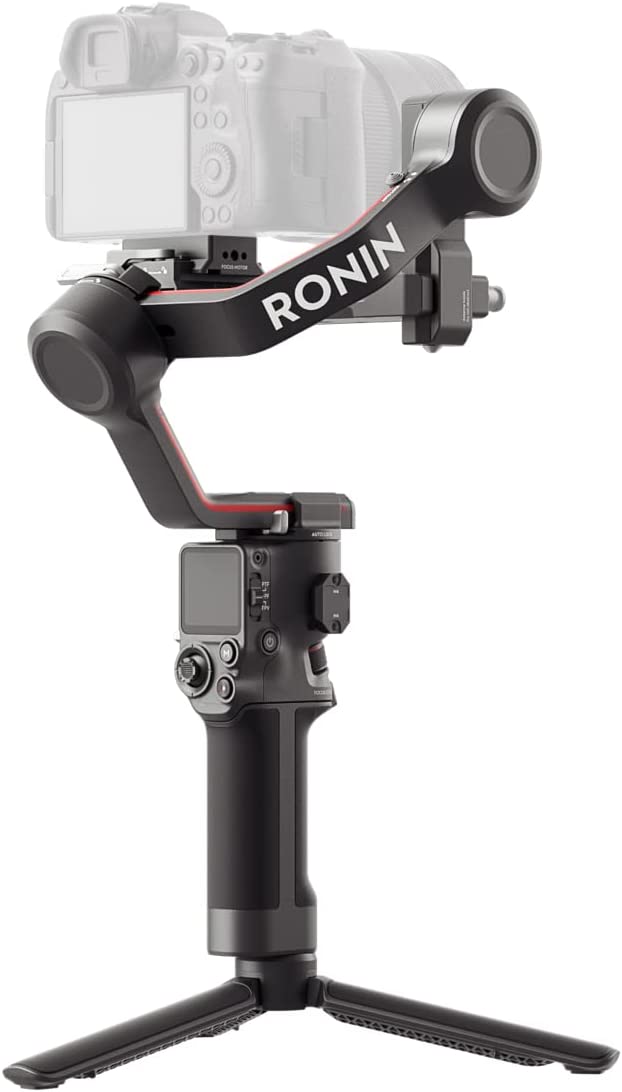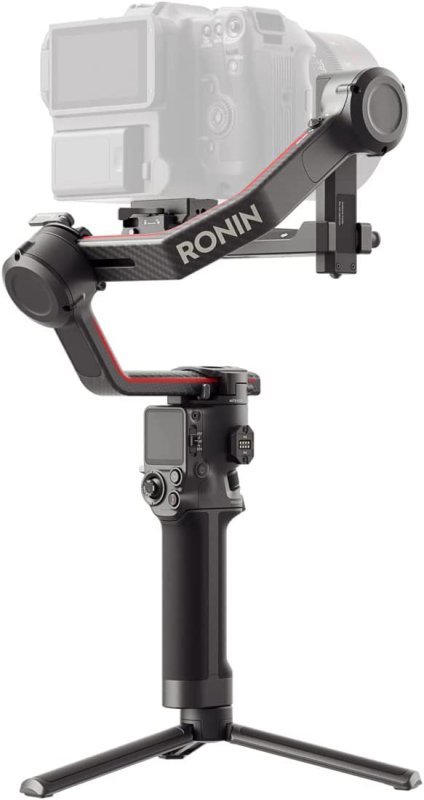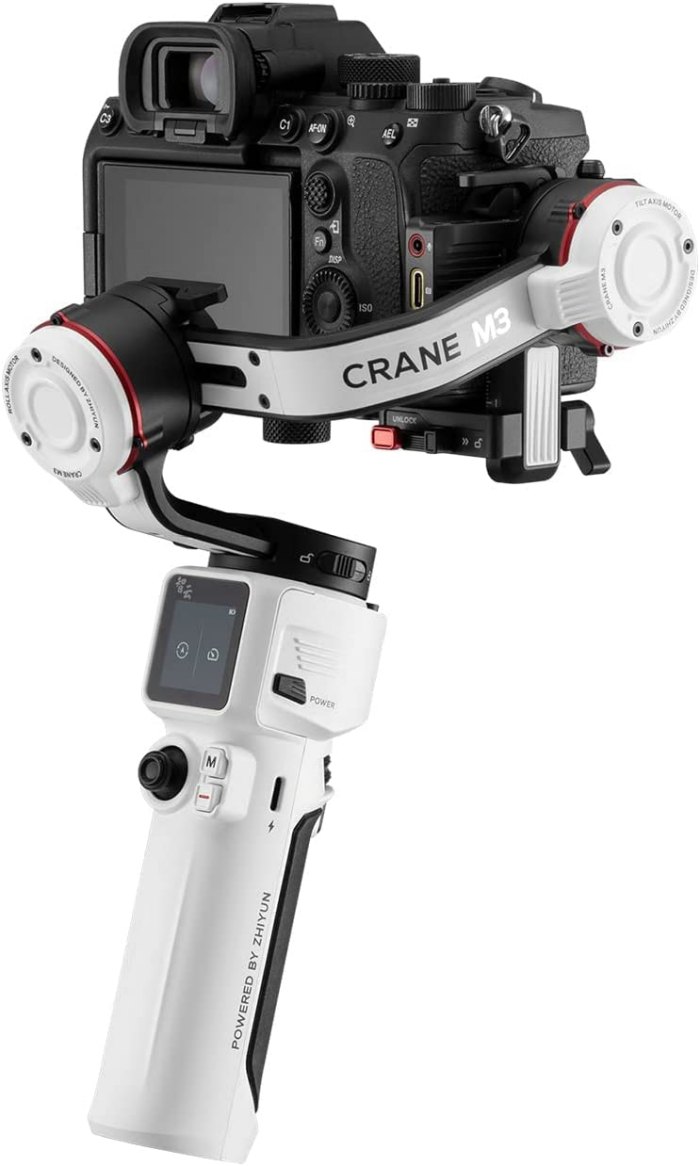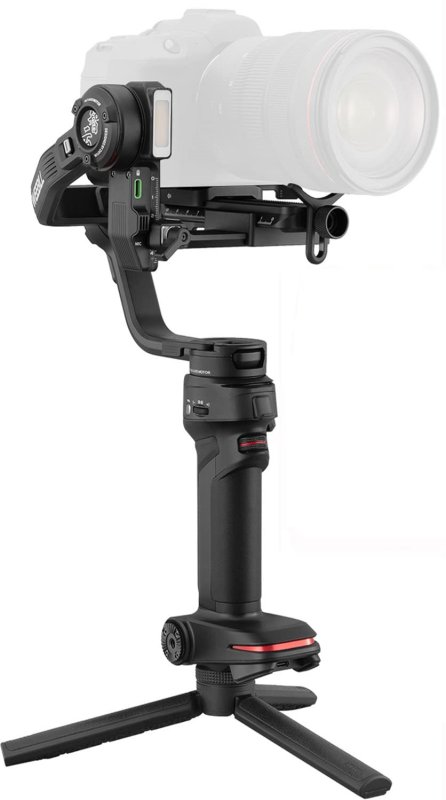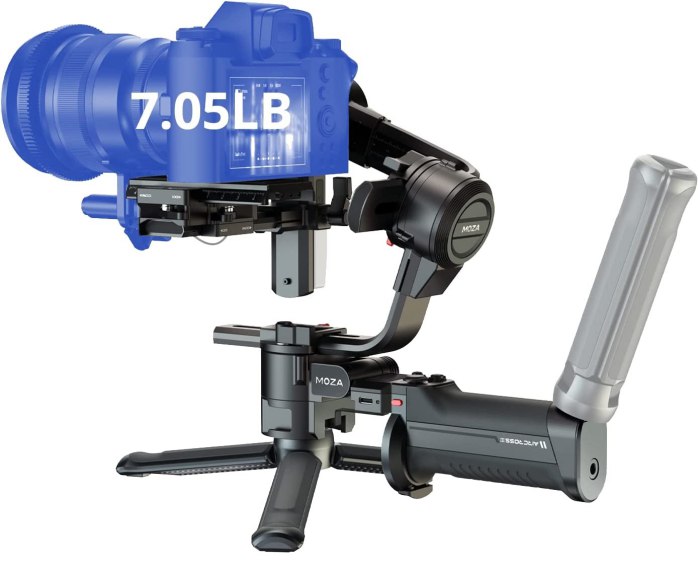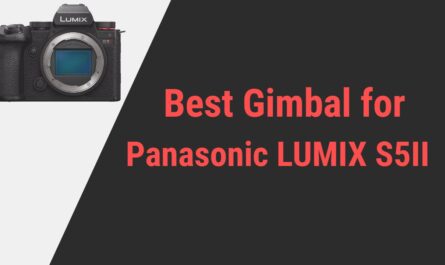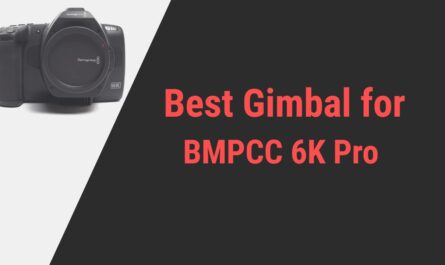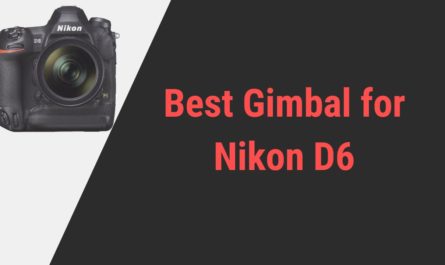If you are a keen photographer, you might have already known that photography is not about framing the subject at a right angle; it’s about how passionately you capture that particular moment in a frame.
That’s called a quality picture. So, to master the art of photography, one must need to know how to get a hand in quality pictures. Well, to my knowledge, there are a lot of ways to get the result, but the most important one is to gather the right tool and have patience and practice.
Now nothing can really match the advanced competency and versatility of Panasonic. The brand GH5 series has quite an impression on the crowd, and so does on me.
I am going to talk about GH5 and GH5 II in this article; two of my favorites. Both cameras are innovative enough to catch exquisitely flawless shots, but what professionalism does it bring when they have been paired with the ideal gimbal?
Now you have the idea already that there is a lot of variation of gimbal wandering around the market itself. Gimbal is different, with different features and designs, it makes finding the right one for these two smart camera tasks super typical.
Determining precisely all the factors, including price, brand, and versatility, I am listing some of my favorite and effective gimbal options below.
All these gimbals have been used with both Panasonic GH5 and GH5 II, so you don’t have to think a bit about compatibility; just look at features and select one right away.
Note
All the gimbals mentioned here are tested with Panasonic Lumix GH5S and GH5 II and work perfectly fine.
| DJI RS 3 (Best Overall)

|
| DJI RS 3 Pro (Most High-end - Highest Payload Capacity & Comes with Advanced Features)
      |
| Zhiyun Crane M3 (Cheapest Gimbal)
      |
| Zhiyun Weebill 3 (Another Gimbal with Great Features)
      |
| MOZA AirCross 3
      |
Best Gimbals for the Panasonic Lumix GH5 II and GH5 S
1. DJI RS 3 – Best Gimbal for Panasonic Lumix GH5S
You can’t compromise with your gimbal purchase if you don’t want to compromise with the picture quality; neither would you afford to get your hands on the wrong gimbal model.
This is the major reason I trust only reliable brands; DJI comes in one of the best names that have been serving innovative digital appliance products with the flavor of accuracy and efficiency for years. So let’s take a look at this magnificent piece of perfection from them: DJI RS 3 Gimbal.
Highlights– The DJI RS3 is something different, a unique approach to stabilization; A gimbal redesigned to be the smartest, lightest, and sleekest with a maximum 6.6 pounds payload; full-color OLED Display, a Greater stabilization algorithm, and a 12-hour battery runtime, all within a reasonable price tag, only to become an ideal companion on the journey of professional photographer
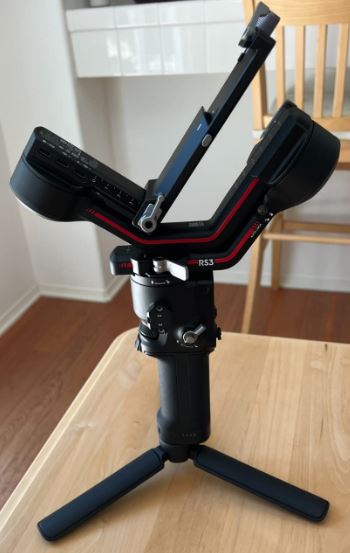

Main Functioning–
The main function is all doing of the functional motor and next-generation stabilization algorithm; the one that intends to provide 20% higher stability in the image while the control stays quite the same.
The advanced involvement of increased motor torque explains the quality of super smooth results. This is the main reason I have a streak of cinematic low-angle shots, running subjects, or impulse motion object footage.
That was the functioning; let’s see what the gimbal can do; escaping the ordinary, the gimbal retains to work through all the different creative shooting modes, including the 3D rotational, FPC, sports, and inception mode.
As the cherry on top, the gimbal also allows intelligent motion functions like Dolly Zoom, Motion lapse, Time Tunnel, Panorama, etc., with ease. For visionary, there’s a full-colored OLED display panel sized 1.8 inches large that has been constructed for the widest display of settings.
Now comes the power; the brand didn’t let the power come any less effective than the other functions.
The Engagement of the new RS 3 Lithium-ion Polymer battery is empowered with 3000 mAh and capable of granting 12 hours of the straight operation time, and thanks to the 18 PD charging courtesy, it takes just 2.5 hours to be fully charged.
The gimbal physics is also quite a masterpiece. Apart from the strength and durability, the design has a unique feature at the bottom that can easily attach a microphone or something through it, and this is the turning point in my filming; the videography became super professional.
Also, Attaching the RS3 with GH5S is super easy which makes it the best gimbal for Panasonic Lumix GH5S.
The weight of the gimbal is the lightest at 2.2 pounds, only finest enough, but the potential to carry a maximum payload of 6.6 pounds is something like dream-come-true stuff.
Talking about the controls, the DJI RS 3 tries to make things as easiest as they can be, which is why it includes the fine-tuned knob that slides to adjust the axis. Another front dial supervises the zooming and focusing control, while the customs allow sliding between new gimbal modes.
The same convenience goes for the monitoring itself; there is the intuitive virtual joystick attached that manages the integrated monitoring and control; however, things get better with the Ronin Image transmitter.
Bottom line –With the large room for stabilization, improved mechanism, user-friendly interface, and convenient function, I believe this DJI RS 3 is quite the upgraded tool if you are looking for cinematic shots.
Pros
- Quick-Release and Auto Axis lock
- Super integrated controls
- Enhanced next-generations stabilization
- Enormously potent battery
- Highest payload and lightest weight
- Effective motion function modes
- Widest 1.8-inch OLED panel
- Convenient Wireless shutter control
Cons
- A little bulkier than other
- Short-lived aspect
2. DJI RS 3 Pro – Best Gimbal for Panasonic Lumix GH5 II
As I said, I only trust the trustworthy ones; there is no denying the fact that DJI is considered one of the finest of all in the market. And so does this iconic DJI RS 3 Pro, an advance update of the previous.
With the strong inspiration of “Dare to Move,” the brand has curated this exquisite piece that follows up with intellectual functions and ease in the way to lead through the super-stabilized cinematic shooting journey. Let’s know a little more about the same.
Highlights– An Upgrade to the DJI RS 3, an advanced redesigned gimbal with even more sleek design and power to determine the tiniest movement caught in camera.
With the means of professionalism, the gimbal intendedly carries up to 10 pounds of weight even when its own body stays only 3.3 pounds.
The out-of-the-ordinary function of the gimbal keeps performing at most 12 hours, while the LiDAR compatibility, Active Track Pro, and 1.8-inch OLED still counted as the complimentary additional.
Main Functioning-
Like the previous edition, this gimbal, too, gets the next-generation stabilization algorithm, one that intends to cast out 5 extra stabilizations over the ordinary gimbals. The same goes for the super smooth stabilized approach.
The easiest quick-release plates ensure stability while the auto axis lock does the security. The wireless camera controls have things more conveniently in hand, but it is what was found in the previous model as well.
Things that make it different from the RS 3 is the advance designing and the body composition of carbon fiber constructing material that signifies heavy duty strength but lightest the weight of 3.3 pounds.
The design of the gimbal supports the attachment of various other accessories like the twist grip handle, control handle, and others. The bottom microphone port stays active for the amusement of videography, while the gimbal approach enhancement.
I very much adore the LiDAR focusing technology of the gimbal, one that makes the focusing so much easier; this is not something you see in every gimbal. And the Dual-mode Bluetooth technology effectively achieves uncompromised connectivity in the way to reliably trust wireless control.
Like the previous one, this RS 3 Pro (Best Gimbal for Panasonic Lumix GH5 II) also encourages integrated and responsive control dials such as the fine-tuning knob, simple sliding, and front. But the fascinating part is this gimbal also supports the remote controlling aspect.
This can be brought down with the association of Ronin 4D Hand Grip, DJI Master Wheels, and the main doing is of gyroscopic sensor enough to grant the photographer creativity in the shot with the convenience of remotely controlling the whole scenario.
Similarly, in the previous model, the gimbal had an in-built 1.8 inched Full-color OLED panel for conveniently monitoring settings and parameters. Also, the highest payload of 10 pounds is way too potent to allow additional accessories involvement.
So does the Lithium-ion polymer firmest battery empowered with 1950 mAh grant the straight 12 hours runtime with the quickest 1.5 hours of charging after the draining completely.
Bottom line – The innovative approach and creative structuring of the gimbal is finest enough, but the potential to trap the impulse motion in the frame is something extraordinary. Being a professional stabilizer is one thing, but carrying a least price budget can save your day.
Pros
- LiDAR focusing mechanism
- High-performer Remote control
- Effective extended grip and tripod
- Carbon Fiber construction
- Active Track Pro included
- Updated stabilization algorithm
- Quick-release and auto axis
- Highest payload to handle
- Teflon-coated components
Cons
- Over-Expensive than other alternatives
3. Zhiyun Crane M3
Other than the DJI Ronin, what exactly comes to mind next to the productive yet trusted maker; Yes, the very special Zhiyun-tech itself. Competing in the market, Zhiyun has also laid its hand in producing quality photography-related tools for a while now.
Their main motto is innovation which is why I can’t resist my urge to explain all about this high-performer, wonderfully formed, and functioning Zhiyun Crane 3 gimbal.
Highlights– The successful approach of bringing stability and professionalism is all this Zhiyun Crane M3 is; the compactly small, lightest weight yet fashionable gimbal with the highest payload and 2 pounds least weight.
The advanced creative follows 360 modes with a 1.22inch OLED. Above all, the eight-hour battery runtime is a good start for a reasonably affordable price budget.
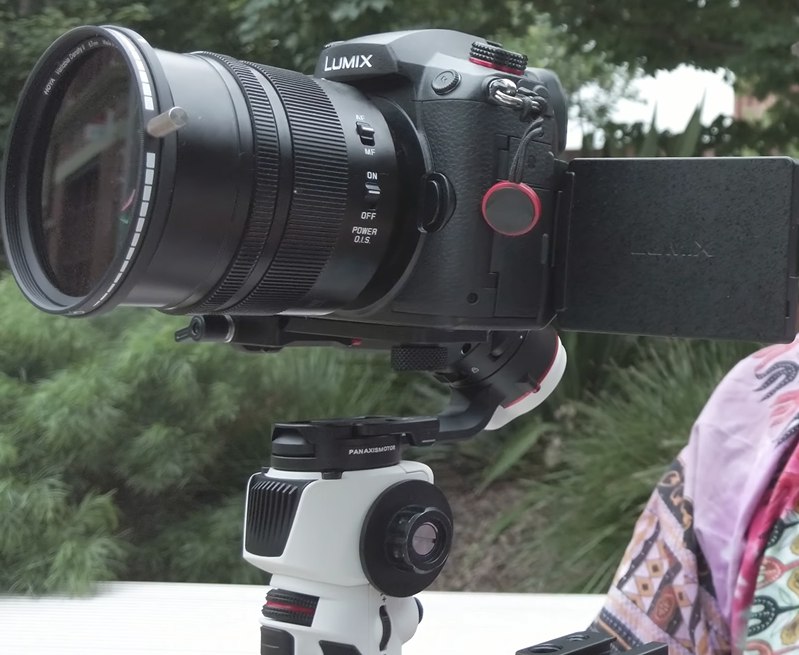

Main Functioning
One of the major factors why I have opted out of this advanced gimbal is its physics. Yes, I have dreamt of getting rid of the hefty stabilizer body, and to my surprise and pleasure, the Crane M3 has made my fantasy come true.
The ultra-compact body of the gimbal with new fashionable white contrast has already stolen all the spotlights. But the twist is, the gimbal’s outer look doesn’t compromise the ergonomics, and the handle fits quite comfortably in the palm.
The engineering magic doesn’t limit there only; the body of the stabilizer also includes an expansion at the base, one that has this microphone connection port for easy installation of the microphone during video filming.
The industrial-graded composite material explains the durability of the lightest weight of 2 pounds is still a shocking but grateful factor for vloggers and travel filmmakers.
The highest payload is not enclosed by the mark, but from my personal experience, the gimbal is trained enough to carry heavy additional accessories.
Different creative shooting modes can be explored by the gimbal, including the pan-follow, lock, follow, point-of-view, Go, and others. However, the security is keen to maintain with the palm-rejection design at the end, along with the fast, quick-release balancing.
As I mentioned earlier, Zhiyun is known for its innovations, which explains the involvement of built-in fill light with CRI 90+ LED, one that allows me the adjustment of color temperature and brightness for my own good in the dark or dim light shooting.
The light filters have color contrast that may help to decorate the illumination perspective in the footage.
At last, the gimbal has been accompanied by the all-new full-color OLED display panel, one sized 1.22 inches and surrounded by advanced UI design. The power of the gimbal is something you can’t ignore too. It’s not much advanced but convenient enough.
The standard eight running hours on a single charge is fair expertise of an in-built 1150 mAh battery. Also, the gimbal has the ability to act as a power bank and even charge the camera itself when needed.
Bottom line– There’s no reason to delay because this might be your solution for those crazy hectic moments spent in catching spontaneous moment subjects. The Gimbal’s High performance and promising results made sure of it.
Pros
- New extraordinary design
- Fastest Type-C charging
- 1.22-inch touch control OLED
- Built-in Fill Lights
- Fastest and easiest Quick release
- Base-microphone expansion
- Ultra-compact size and least weight
- Reasonably affordable
- Additional Fill light filters
Cons
- Battery runtime could be better
- Sometimes fluctuate with attachments
4. Zhiyun Weebill 3
Moving forward, I have another masterpiece from the same brand. Same innovation and function but with a little more convenient approach. The exclusively designed camera as an ultimatum to jittering and shakiness with a professional verdict; anything left that one could desire?
Weebill 3 is here on the list because of one major reason; I can’t forget the effortless, fruitful, and creative experience I had with its top-notch stabilization algorithm and functions. Let me share some with you.
Highlights– Zhiyun-Tech is all about technology, which is why they introduced Weebill 3, an improved gimbal with an extendable sling design, optimized function, and upgraded motor with the highest payload and least 2.4 pounds weight.
With additional light and sound involvement, 0.96 OLED, and the almighty 21 hours of extended runtime, this Weebill 3 has literally everything a professional photographer looks for.
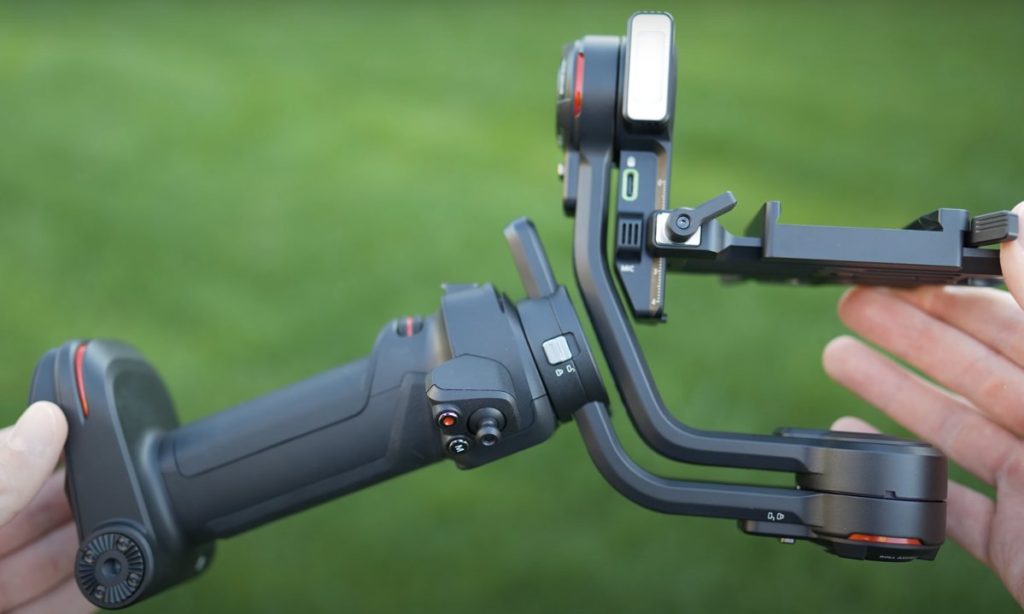

Main Functioning-
Okay, let’s start with the one thing I adore most, engineering; The Weebill 3 has the most attractive physics. The gimbal has an L-shaped body structure with a revised strongest design and an improved sling 2.0 structure better than the Zhiyun other gimbals model.
Along with the look, the gimbal also has the user’s convenience in mind, which is why the extendable handle grip and wrist support approached.
That’s not it; the gimbal structure also includes the bottom expansion with the 3.5mm General audio port configuration for better cardioid recording. Summing all the weight of the gimbals lies lowest around 2.4 pounds only.
The internal design of the gimbal has this super powerful upgraded motor that grants the stabilized approach to the footage with a little help from an optimized stabilization algorithm.
Not every advanced gimbal includes the entanglement of toughest mounting; this WEEBILL 3 has taught me that. Through the Magnetic wrench design, mounting the camera on Weebill 3 became super easy.
Quick release plates still complement the whole balancing stuff. So yeah, both cameras can be operable along with other wide-compatible models.
The next big thing about the gimbal is power; this Weebill 3 power lasts forever; the three lithium-ion batteries empowered 2600 mAh took an oath of providing 21 hours of constant operation on a single charge, and the battery can be recharged within 2 hours only.
Like the Crane 3, this gimbal also has a favorite corner for the whole better illumination in the footage; this gets explained by the in-built Fill light advancement.
This fill light has 100 lumens of brightness and adjustable color temperature that makes the Dark hour filming better. As the cherry on top, the gimbal also has effective fill light filters of four different colors, just to spice things up.
The control of the gimbal is straightforwardly effortless; the customizable trigger button and wheel control can be secured with a camera or gimbal essential setting parameters, while the 2.4 GHz Wi-Fi and 5.0 Bluetooth manage the wireless monitoring.
There’s also the Smart OLED panel designed with the gimbal and sized at 0.96 inches that gives constant updates during filming.
Bottom line – The variation of advanced features like balance, control, and versatile character all tend towards being another finest stabilization tool that is designed to tackle the heavy-duty job. So yeah, you can get this spectacular tool economically.
Pros
- L-shaped, Sling 2.0 structured body
- In-built effective Microphone
- Extendable grip handle and wrist support
- In-built fill light with filter kit
- Upgraded motor and stabilization
- Improved auto axis lock
- customizable trigger and wheel control
- Magnetic wrench mounting
- Longest 21 hours of battery runtime
Cons
- Specifying Payload could help
- Monitoring should be user-friendly
5. MOZA AirCross 3
Stabilized balancing, responsive intellectual, unparallel optics, strongest body, and easy convenience; sounds like a dream? Not entirely, not when this all can be obtained with a single gimbal choice; The choice of professionals- Moza Aircross 3 Gimbal.
Now pay a little more attention to this piece; it’s quite fascinating and one of my favorites. The intuitive functioning of the gimbal has to handle the lightest to heaviest duty job itself, but the best of all is it doesn’t require a lot of expense.
Highlights– The professional approach by the brand standardized the enhanced functions and potential; the i-Focus motor and its granted potential to carry up to 7 pounds, even when its weight lies at 2.9 pounds.
The Moza Aircross 3 is quite a performer with attractively wisest configuration and controls like subject tracking and intelligence for creative sports mode stuff. The rigid battery allows 19 hours of straight work time while the OLED display keeps the visionary efficiency at pace.
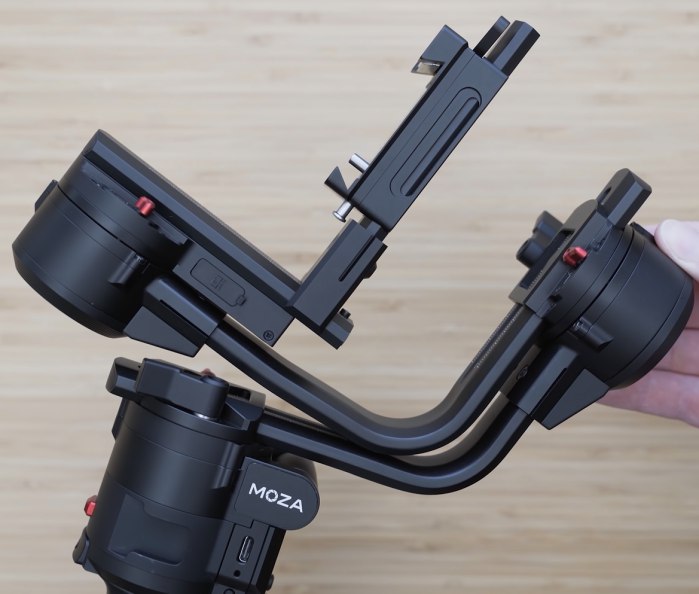

Main Functioning-
There’s a lot to mention, but let’s start with the Aircross 3 updated compact and ergonomic design. The model has an improved infrastructure with a strengthened metal design that feels comfortable in the palm. Moreover, even with the compact body, the gimbal is always ready to be folded down to the size of A4 Size paper only by Zhiyun’s wonderful effort of injecting foldable design.
That’s the designing, now the creativity; The Moza Aircross 3 doesn’t lack the ability to explore artists. It’s designed to follow up different shooting modes along the four follow modes itself, including the FPV and Sport 2.0 Mode.
Speaking from my experience, the gimbal is trained to get the sudden movement with an all-lock follow feature and through five adjustable speed control.
The gimbal also features a distinctive manual lock on the axis to balance the camera when needed, but that’s the best part. There’s also a hand gesture control that works for the start and stops the camera along the way.
The gimbal impressed me with the super responsive subject tracking and face and body recognition intelligence, one that assured the rightful subject in the frame.
The gimbal, all the innovative functions are the result of the super performer motor. The hard-working motor determines and reduces the shake, but the fun fact is it’s designed in such a way that the motor consumes less power and gives a better result.
In addition, a productive Deep red Algorithm inside the Aircross 3 has made the stability and control over the shots more ironically impressive.
The advanced engagement of improved Spark Power Supply system 3.0 courtesy grants enough performance to rock the cinematic shooting all day long.
One lithium-ion integrated battery empowering the 3500 mAh potential guided the 19 hours of straight runtime with the quickest 1.4 hours charging possible. Even with the lightest weight of 2.9 pounds, the Aircross 3 has the character to carry accessories weighing up to 7 pounds.
Besides all that, the gimbal physics is configured with the upgraded OLED display UI, which has the simplest layout design and a graphic sidebar menu for monitoring and control.
At the top, Fine-tuning 3-latch locking and easy portrait to landscape filming complements the artist’s creativity at the peak, all at a wonderful price tag.
Bottom line – Welcome professional stability at home with this high-performer camera shake effect elimination tool designed with extra care. The reliability and intelligent combination in Moza Aircross 3 might be the lost limb if you are looking for pro-level photography.
Pros
- Improved motor and mounting
- 19 hours longest battery
- Deep Red Algorithm power
- Easy portrait to landscape shooting
- Manual positioning 2.0
- Three-latch locking system
- Auto tuning AI
- Creative follow, inception, and sport mode
- Highest payload and compact body
Cons
- Excessively heavy weighted
- Fluctuate with additional carryover
How to know which brand’s Gimbal is best for Panasonic advanced camera
Purchasing a gimbal is no rocket science, literally, but have you ever considered what happens if you don’t make the right purchase? Does the thought cross your mind about what impact it led on the footage and camera if you messed up with the relevant brand of the gimbal?
Cameras like Panasonic Lumix GH5 S and GH5 II are literally capable of filming perfection in the frame; they are configured with some really smart optics. So, what will happen to them if you attach the wrong brand with those high-end cameras?
Well, let me tell me, the consequence of getting yourself the wrong brand is highly disturbing. Not only your precious money, the footage, the camera, and the usage, but everything falls apart.
Now there are numerous brands in the market claiming their expertise best, but how would you choose which one is best for them? Well, it’s simple. While considering any finest brand for your next purchase, there are a few things you would like to determine in order to get the best.
Brand Value– Don’t just roam around so-called reputed or highly promoted brands offering a cheap value. It might be the chances that they are fake and trying to build on a false reputation in the market.
Customer Rating– The brand’s authenticity, reliability, and quality of service can be defined by the customer rating it receives. You can check that online. A better rating means better engagement and experience from a wide number of people.
Customer Reviews– Brand reliability can be specified by customer feedback. They are somewhere in the world. So, you can go around and check for the customer reviews written for the brand you are considering.
Seller Rank– Don’t forget to look around at the seller rank in the market. You can easily get sight of which brand is trending and first in the market.
Quality Service– Do not forget to take a peek at the quality of service the brand has been offering and since when.
Value for money– Know that not every cheap tool is worthy, and neither every expensive tool is useful. Make sure the brand offers a relevant price range.
Expertise– Have you heard the term “Niche brand”; these are the brands that only make one kind of appliance, like only gimbals in this case. Such a brand is considered an expert because they pour their competency into making innovative creative without any distraction.
Specification– At last, do check on the features injected by the brand in the product. Determine which of them are useful for your camera.
Know your Camera Specialty
Panasonic is the finest name in the digital photography era, the brand that has produced quality tools for decades. The brand originated in the year 1918, around a century ago, and serves the best on the plate as a multinational Japanese corporation.
The brand’s expertise falls as a conglomerate, but they have a major role in serving advanced photography tools. Lumix is one of their effective digital camera series, and the Lumix GH5 S and Lumix GH5 II are two outstanding jewels of that precious treasury.
Panasonic Lumix GH5 S
Panasonic Lumix GH5 S is a popular mirrorless micro-four thirds camera that has major expertise in the video realm. The brand introduces this finest creation in the year 2018 with the brief intention of ruling the filmmaking world. The vision, the configuration, and every single thing of the camera are top-notch designed.
The fantastic edition with a great photo and video quality, advanced speed, a wealth of the greatest in-built features, and a decent price tag. Seems like a dream come true to professionals as well as beginners.
The camera has been filled with some magnetic quality upgrades, like playing with the resolution for clarity, ranging the ISO for better illumination, and much more.
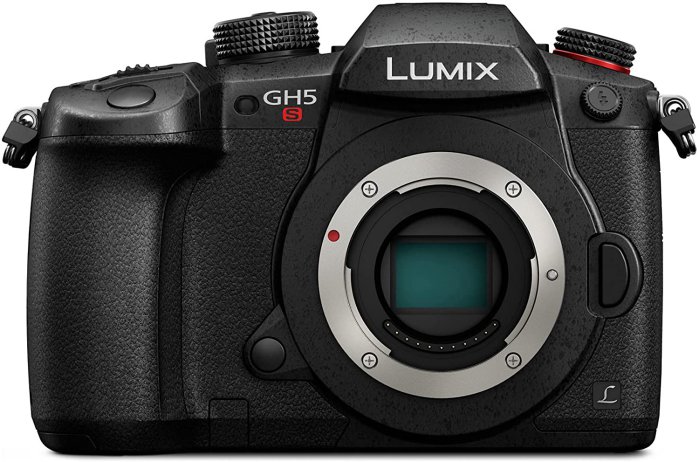

Pros of Panasonic Lumix GH5 S
- Excellent video-centric features
- High ISO range
- No video recording limit
- Conveniently portable
- Highest 4K shooting at 60p speed
- Better shutter speed as well
Cons of Panasonic Lumix GH5 S
- The resolution is not good enough for photography
- Lack in-body stabilization
- Manifest a little buffering
Panasonic Lumix GH5 II
Panasonic released this updated version of filming perfection, the most high-function Lumix GH5 II camera with increased potential.
The micro four-thirds camera surrounds the developed processor and its competency, higher resolution, better speed, and almost everything. The brand came up with this masterpiece recently in the year 2021 with a professional approach and reasonable cost.
Like the GH5 S, this Lumix GH5 II too falls in the video-centric category; only this one has better quality, speed, and improved focusing and stuff. The brand also has injected some rarest yet meaningful features separately in this magnificent piece.
And nothing can match the ease of operation the camera provides through its compact body and effortless ergonomics.
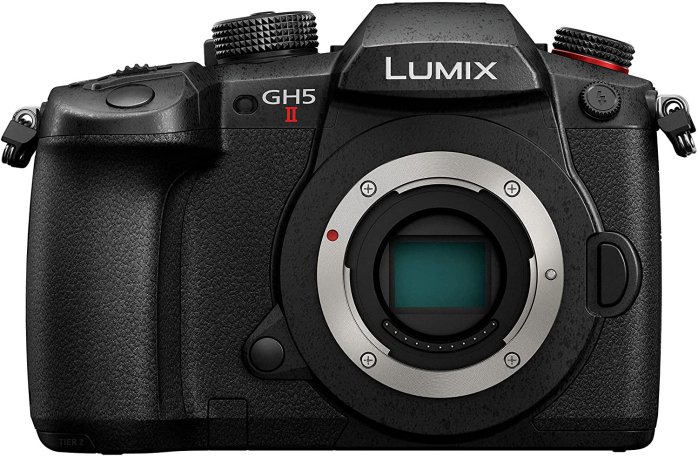

Pros of Panasonic Lumix GH5 II
- Strongest weather-resistant body
- In-built image stabilization
- A flat V-log L profile comes along
- 6K shooting at 30p
- Wireless live streaming
- Upgraded processor
Cons of Panasonic Lumix GH5 II
- Sometimes focusing drifts at a higher speed
- Low light video quality can do better
- No raw video recording supported
Know the significant differences between Panasonic Lumix GH5S and GH5 II
The Lumix GH5 II and GH5 S are almost similar cameras with some identical features like they both are video-centric. How with the three years of gap in the launch, they didn’t differ from one another. Let’s have a look at how.
The similarity between the Panasonic Lumix GH5 S and Panasonic Lumix GH5 II
Body– Both of the cameras is strongly constructed with the magnesium alloy composite, and they both have the same size and the premium water-resistant feature
In-General– Both of the cameras are engineered in the SLR- Single Lens Reflex body with the same advanced vision and with the four-third CMOS sensor and Micro four-third mount in the way.
Viewfinder– Both cameras are fond of the brightest vision, which is why they have a viewfinder structure. Both Lumix GH5 S and Lumix GH5 II have the built-in electronic viewfinder with 3.68 million dot resolution and 100% coverage with 0.76x magnification as well.
Focus– Both innovative cameras have the same auto and manual focus with similar focus modes (Auto, continuous-servo, flexible, manual, and single-servo) and similar 225 contrast detection points
Shutter– Both of the cameras have an electronic shutter and mechanical focal plane shutter, and they both possess the 12 frames per second speed of continuous shooting
Microphone– Both of the cameras are configured with the stereotype built-in Microphone that is found quite useful during the AAC audio and video recording.
Storage– Both of the cameras are engineered with a dual slot for a memory card. And both of them support SDHC or SDXC in UHS-II bus format storage cards.
Differences between the Panasonic Lumix GH5S and GH5 II
Launch– Panasonic introduced the Lumix GH5 S earlier in January 2018. While the Lumix GH5 II came out of the blue after three straight years recently, in July 2021.
Still shooting– Both cameras can shoot high-quality still images; however, Lumix GH5 S has a 10–megapixel resolution to do so, and Lumix GH5 II has a 20–megapixel resolution for the same.
Video– Being video-centric, both cameras can gain better video quality. However, Lumix GH5 S can shoot Ultra HD 4K video at a possible 60p speed. In contrast, the Lumix GH5 II is potent enough to shoot 6K video at 30p and also UHD 4K at 60p.
Video recording– Both cameras have the wise wish to achieve professionalism in the video; But the Lumix GH5 II only supports unlimited recording with no limitation, which cannot be said the same for Lumix GH5 S.
ISO– With the visionary difference, both cameras have auto ISO, but the sensitivity differs. Lumix GH5 S has ISO 160 to ISO 51200 that can be extended to ISO 204800; While the Lumix GH5 II has ISO 200 to 25600, and it can’t be extended.
Display monitor– unlike the viewfinder, the display of both cameras has a major difference. Lumix GH5 II has a free-angle tilting LCD with touch control and 1840 K resolution and 3 inches size as well. While Lumix GH5 S has articulating touchscreen LCD panel with 1620 K dot resolution sized at 3.2 inches.
Weight– Even though the size of both cameras is, the weight still differs. Lumix GH5 S with the simplest configuration has 660 grams weight when including battery. In contrast, the Lumix GHS II with advanced intellect has 727 grams of weight, including the battery.
Battery– Both cameras include different battery attachments. Lumix GH5 S has one lithium-ion rechargeable battery empowered 1860 mAh, while the Lumix GH5 II has one lithium-ion rechargeable battery of 2200 mAh.
Battery runtime– Since both cameras have different power, they do differ in operation time. Lumix GH5 S is subject to deliver 440 still shooting shots and 125 minutes of video filming in a single charge. While Lumix GH5 II is empowered enough to give 400 constant photos with 125 minutes of filming in a single charge
Stabilization– The advancement of the Lumix GH5 II involves intuitive Sensor shift, Five-axis Image stabilization. But the Lumix GH5 S lacks image stabilization.
Price– The launching price of the Lumix GH5 S is $2499 for the body only. In contrast, the launching price of Lumix GH5 II is $1699 for the body only. However, they are nearly the same at the current time period.
Frequently Asked Questions (FAQs)
Q. Does Gimbal need more accessories?
Not necessarily; Gimbal itself is a smart and innovative tool and definitely doesn’t rely on the other accessories. However, if you look precisely, you will see there are some quite fruitful tools that can not only help enhance the efficiency of your gimbal but also keep it safe. You can carry an extra pair of batteries for interrupted working, or an additional flash for artificial lighting, a Backpack to ensure the collective safety of gadgets, and most importantly, a professional cleaning kit for adding extra years to the gimbal life.
Q. How Does The Type of Camera Affect What Gimbal You Buy?
Well, in a lot of ways, see, gimbal usage is all about balance, and it definitely requires an adequate counterweight to keep the whole thing steady and secured, and that’s where the type of camera comes along. Each individual type of camera has its own size, engineering, and weight; like; the Panasonic GH5S has a 660-gram weight, and GH5 II has a 727-gram weight. So, if these cameras get mounted on the gimbal that supports a payload higher than the camera’s weight, all works fine. But the lesser payload-supported gimbal can make things complicated a little.
Q. Which is Better: Panasonic Lumix GH5S or Panasonic GH5 II?
Well, both cameras are designed to work high-end jobs. They both are considered top-notch innovative cameras, but Lumix GH5 II being a recent and upgraded launch; I find that it has more intriguing features than the ordinary GH5 S. Lumix GH5 S has a 10-megapixel sensor, 4K video ability, and a durable body is quite fascinating for people until the GH5 II came around. One with a 20-megapixel sensor, 6K video shooting potential, weather-resistant strongest body, and much more. So considering the innovative GH5 II is better than the GH5 S, but when it comes to price, GH5 S leads the way.
Q. When to Use a Gimbal with GH5S and GH5 II?
As you have already known, both Lumix GH5 S and GH5 II have supremacy in shooting magnificent video footage. The gimbal also plays the major with the whole steady concept in the filmmaking stuff. So I guess when you opt to shoot vlog, travel videos, interviews, or commercials the gimbal can literally make things amusingly enough. GH5 S, with its 4K video shooting ability, has crafted majestical cinema while the GH5 II mastered filmmaking through its 6K video shooting ability; injecting unrivaled competency of the gimbal can make the thing go super pro level.
Wrapping up!
So that was all about today; I have tried every inch of detail to enlist here in the article. Covered the most loved and popular gimbal that is quite rightful for the GH5 and GH5 II.
These gimbal choices are unbiased, and I have compared them through their performance, versatility, and speed factor. I have also mentioned the expertise and difference between both of these high-end cameras. So I hope I have helped you enough to lead you toward a better purchase.
Now, remember, Panasonic GH5 and GH5 II are both one of the finest, innovatively curated camera models, so I can’t take the chances of pairing them with the wrong gimbal; neither should you.
I strongly recommend you to carefully look at every aspect before making up your mind; That is what makes a worthy purchase.
Thus bidding you adieu, I would like to end the discussion here, but you are welcome to ask around any queries or leave feedback here. Also, don’t forget to mention which of these are the best according to you. Till then, happy filming.

